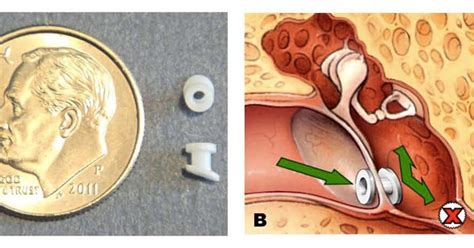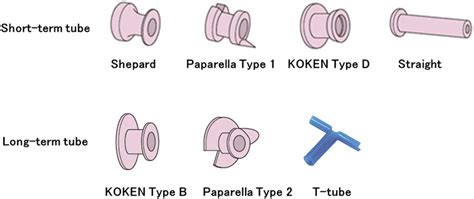Intro
Discover the Tubes In Ears Solution, a relief for ear infections, hearing loss, and ear pressure, using ear tubes to drain fluid and ventilate the middle ear, alleviating symptoms and promoting healthy hearing and ear health.
Ear tubes, also known as tympanostomy tubes, are small tubes inserted into the eardrum to drain fluid and air pressure from the middle ear. The procedure is commonly performed on children, but it can also be done on adults. Ear tubes are often used to treat recurring ear infections, persistent fluid buildup, or hearing loss due to middle ear problems. In this article, we will delve into the world of ear tubes, exploring the benefits, working mechanisms, and steps involved in the procedure.
Ear infections and fluid buildup can cause significant discomfort, hearing difficulties, and even lead to more severe complications if left untreated. The eustachian tube, which connects the middle ear to the back of the throat, plays a crucial role in regulating air pressure and fluid drainage. However, when this tube becomes blocked or dysfunctional, fluid can accumulate, leading to infections and other issues. Ear tubes provide a solution by allowing air to enter the middle ear and fluid to drain out, helping to restore normal hearing and prevent further complications.
The decision to insert ear tubes is typically made after a thorough examination by an ear, nose, and throat (ENT) specialist. The doctor will assess the patient's medical history, perform a physical examination, and may use various diagnostic tools, such as tympanometry or acoustic reflectometry, to evaluate the middle ear function. If ear tubes are deemed necessary, the procedure is usually performed under general anesthesia or sedation, depending on the patient's age and health status. The surgery itself is relatively quick, lasting around 15-30 minutes, and is typically done on an outpatient basis.
Benefits of Ear Tubes

How Ear Tubes Work
Ear tubes work by providing a temporary bypass for the eustachian tube, allowing air to enter the middle ear and fluid to drain out. The tube is typically made of plastic or metal and is inserted into the eardrum through a small incision. The tube is designed to remain in place for several months to a few years, depending on the type of tube and the individual's needs. During this time, the tube helps to regulate air pressure and fluid drainage, reducing the risk of ear infections and other complications.Types of Ear Tubes

Steps Involved in Ear Tube Procedure
The ear tube procedure is typically performed under general anesthesia or sedation, depending on the patient's age and health status. The steps involved in the procedure include: 1. Preparation: The patient is prepared for surgery by removing any jewelry or other objects that may interfere with the procedure. 2. Administration of anesthesia: The patient is given general anesthesia or sedation to ensure comfort during the procedure. 3. Insertion of ear tube: The surgeon makes a small incision in the eardrum and inserts the ear tube. 4. Placement of ear tube: The ear tube is placed in the correct position, and the incision is closed. 5. Recovery: The patient is taken to the recovery room, where they are monitored for any complications.Risks and Complications

Post-Operative Care
After the ear tube procedure, it is essential to follow the surgeon's instructions for post-operative care. Some of the things to keep in mind include: * Avoid getting water in the ear: Water can enter the middle ear through the ear tube, leading to infection. * Avoid blowing nose: Blowing the nose can force air into the middle ear, leading to infection. * Avoid heavy lifting: Heavy lifting can dislodge the ear tube, leading to further complications. * Follow up appointments: It is essential to follow up with the surgeon to ensure that the ear tube is functioning correctly and to remove the tube when it is no longer needed.Cost and Insurance

Alternative Treatments
There are alternative treatments available for ear infections and fluid buildup, including: * Antibiotics: Antibiotics can be used to treat ear infections. * Nasal steroids: Nasal steroids can be used to reduce inflammation and promote drainage. * Hearing aids: Hearing aids can be used to improve hearing in individuals with persistent fluid buildup or hearing loss. * Middle ear implants: Middle ear implants can be used to improve hearing in individuals with severe middle ear problems.Conclusion and Next Steps

We invite you to share your thoughts and experiences with ear tubes in the comments below. If you have any questions or concerns, please do not hesitate to reach out. We are here to provide you with the information and support you need to make informed decisions about your health.
What are ear tubes, and how do they work?
+Ear tubes, also known as tympanostomy tubes, are small tubes inserted into the eardrum to drain fluid and air pressure from the middle ear. They work by providing a temporary bypass for the eustachian tube, allowing air to enter the middle ear and fluid to drain out.
What are the benefits of ear tubes?
+The benefits of ear tubes include reduced risk of ear infections, improved hearing, decreased risk of complications, and reduced need for antibiotics.
What are the risks and complications associated with ear tubes?
+The risks and complications associated with ear tubes include infection, scarring, perforation, and displacement.
How long do ear tubes stay in place?
+Ear tubes can stay in place for several months to a few years, depending on the type of tube and the individual's needs.
Are ear tubes covered by insurance?
+Insurance coverage for ear tubes varies depending on the insurance provider and the individual's policy. It is essential to check with the insurance provider to determine the level of coverage.
